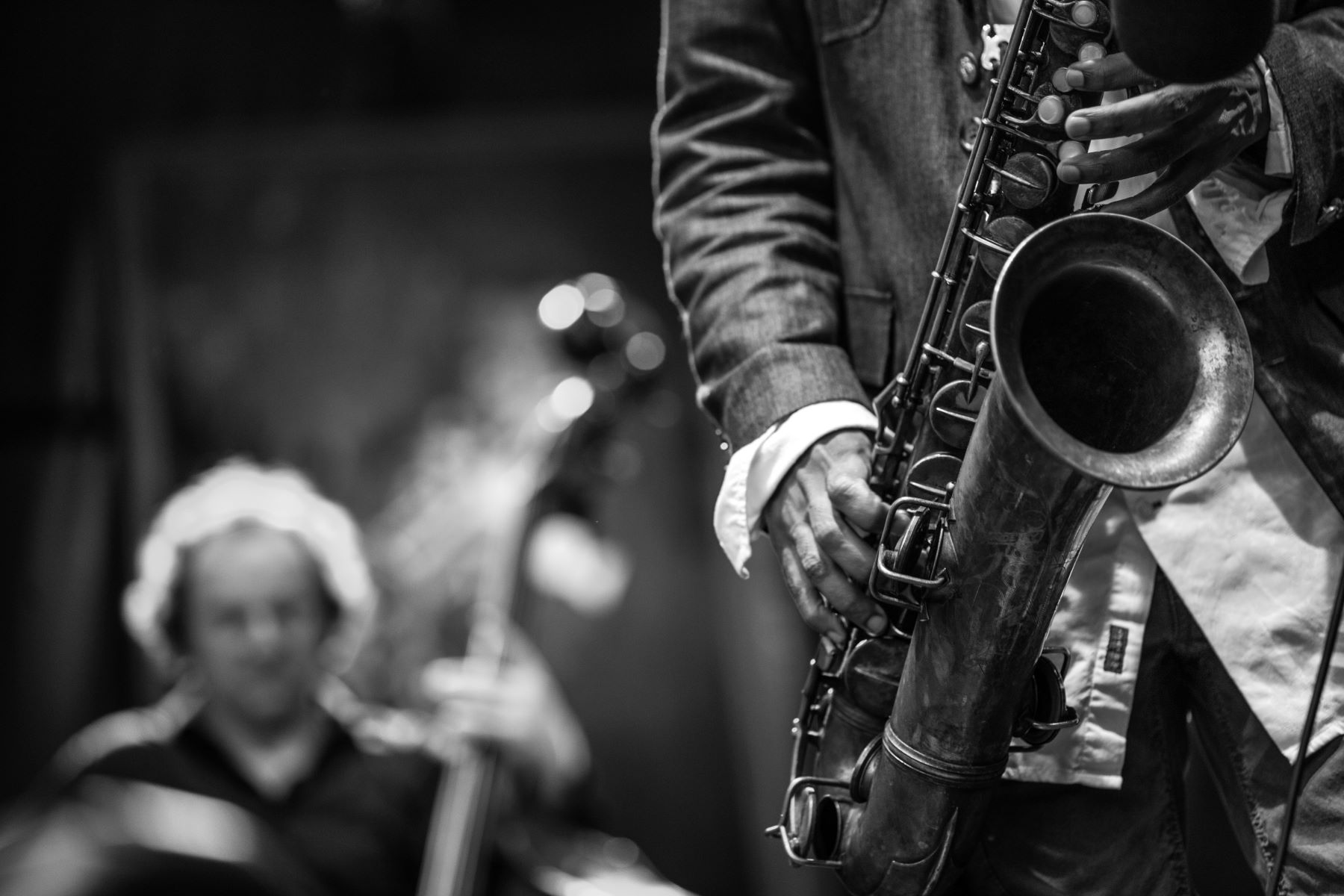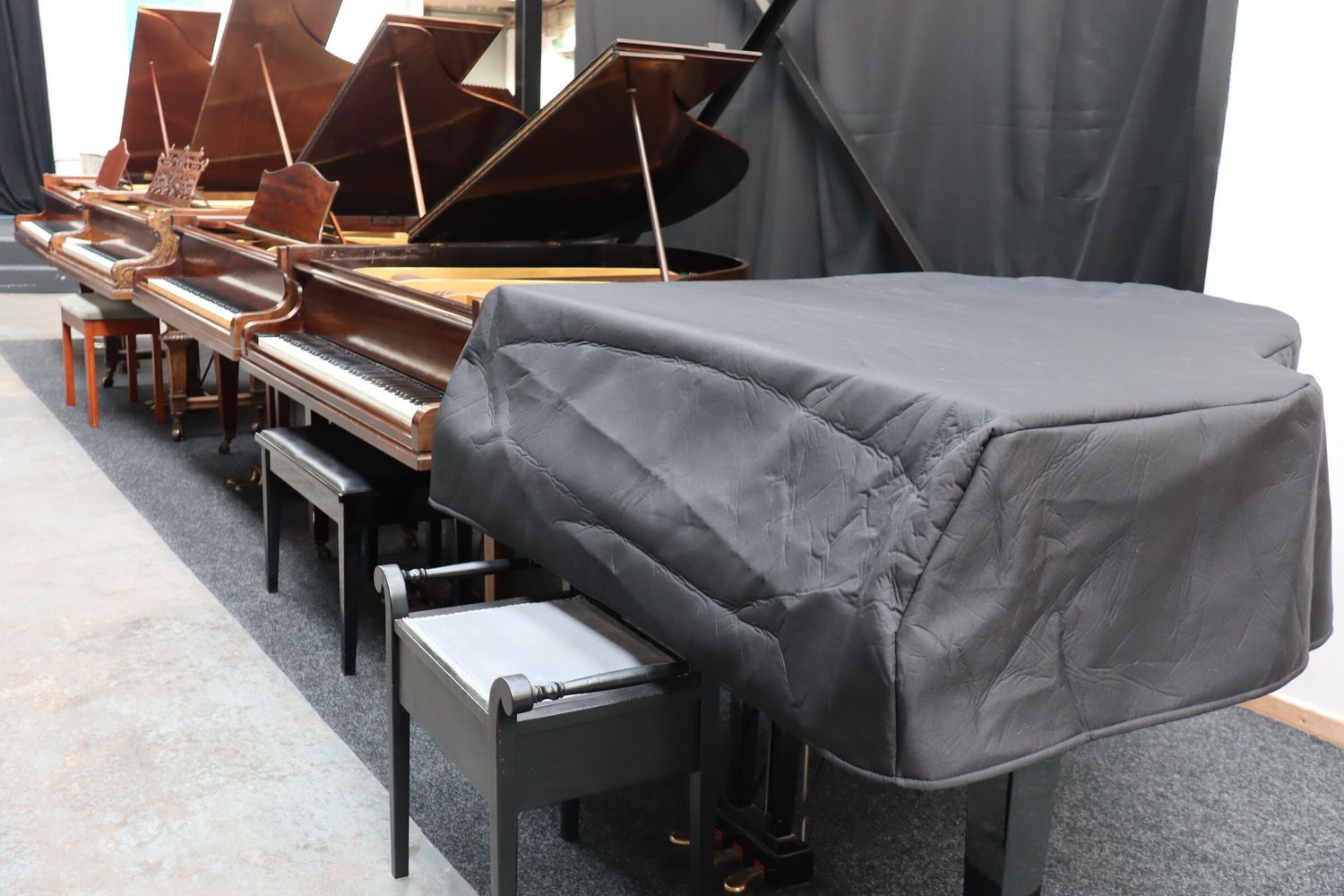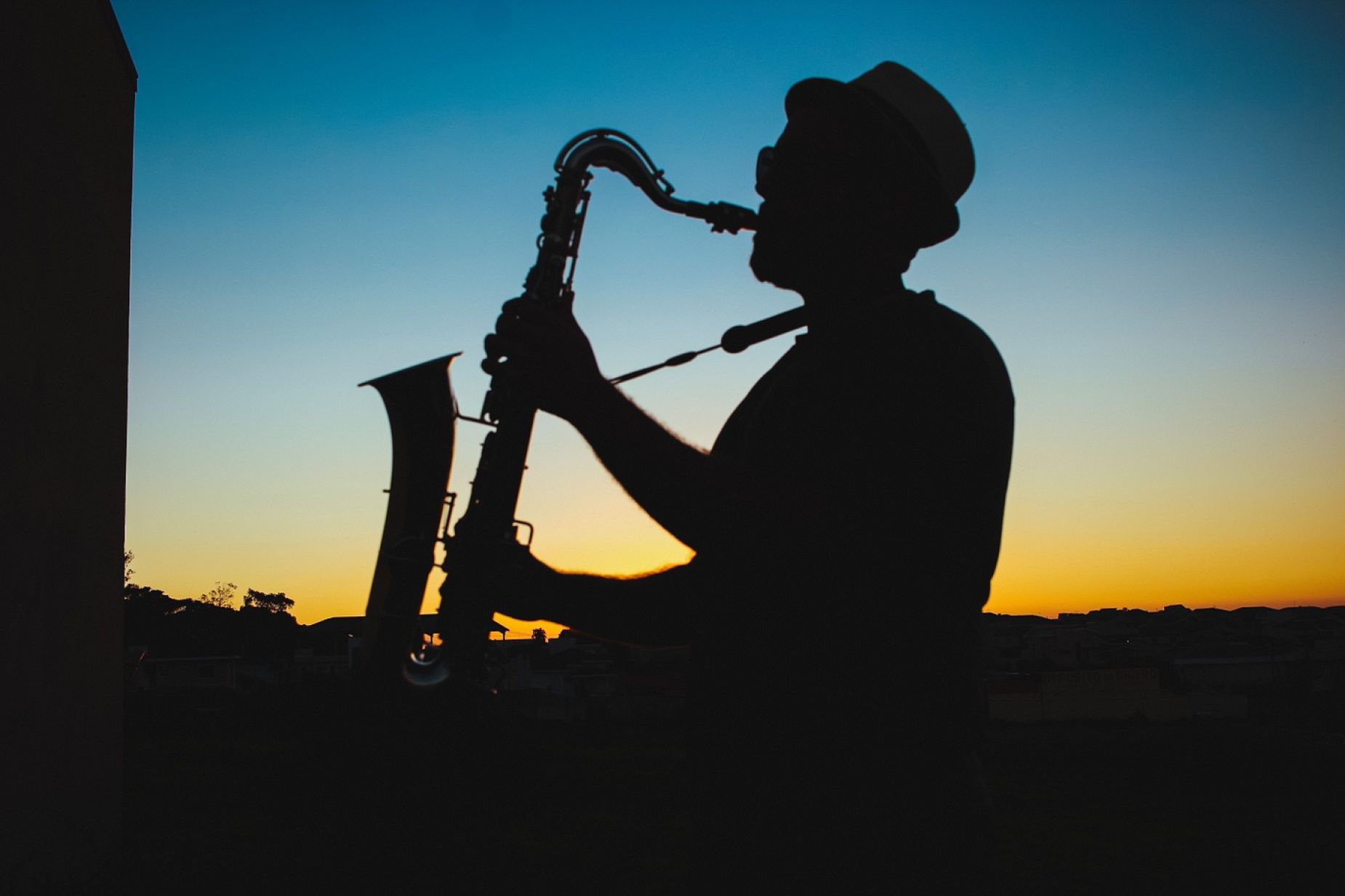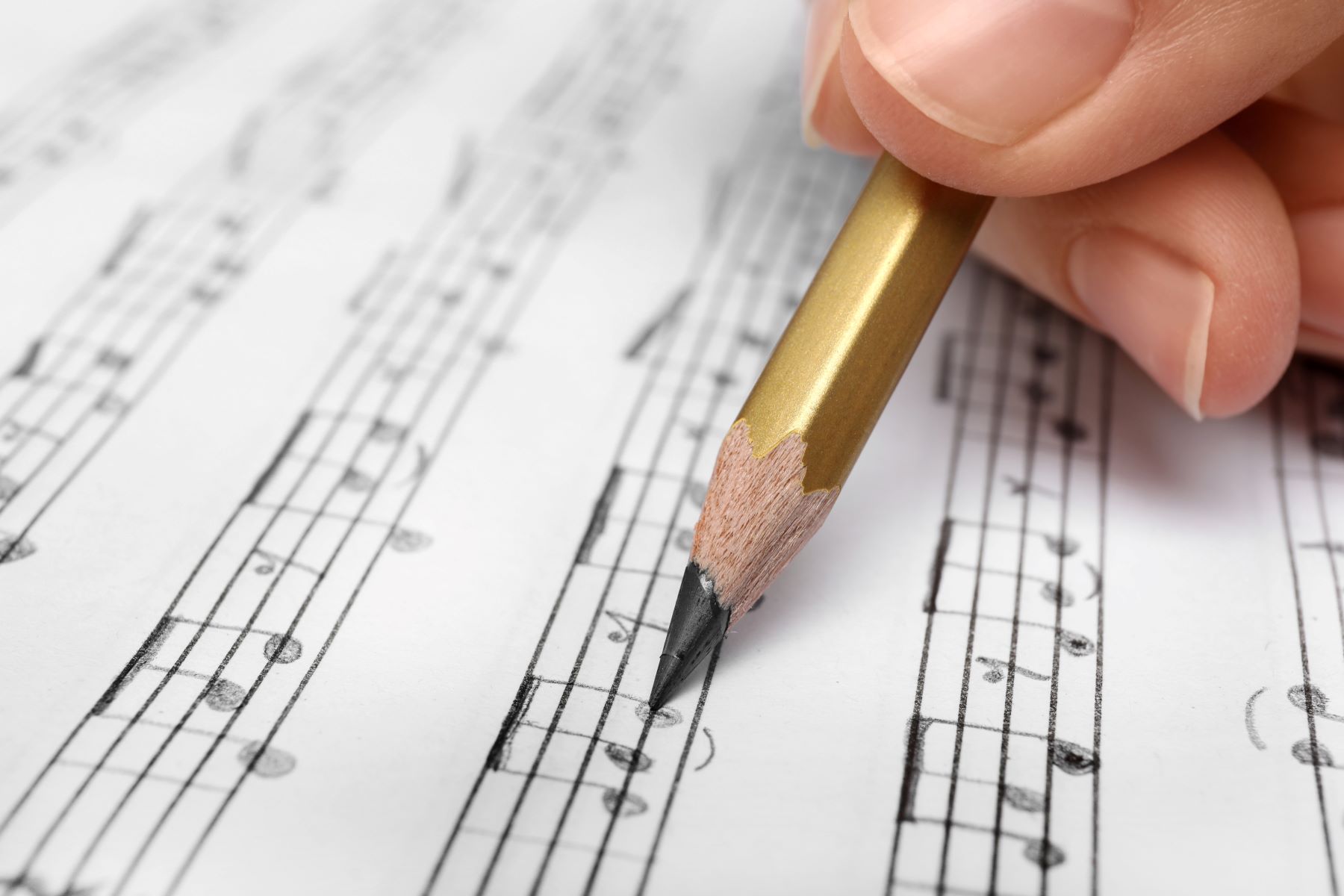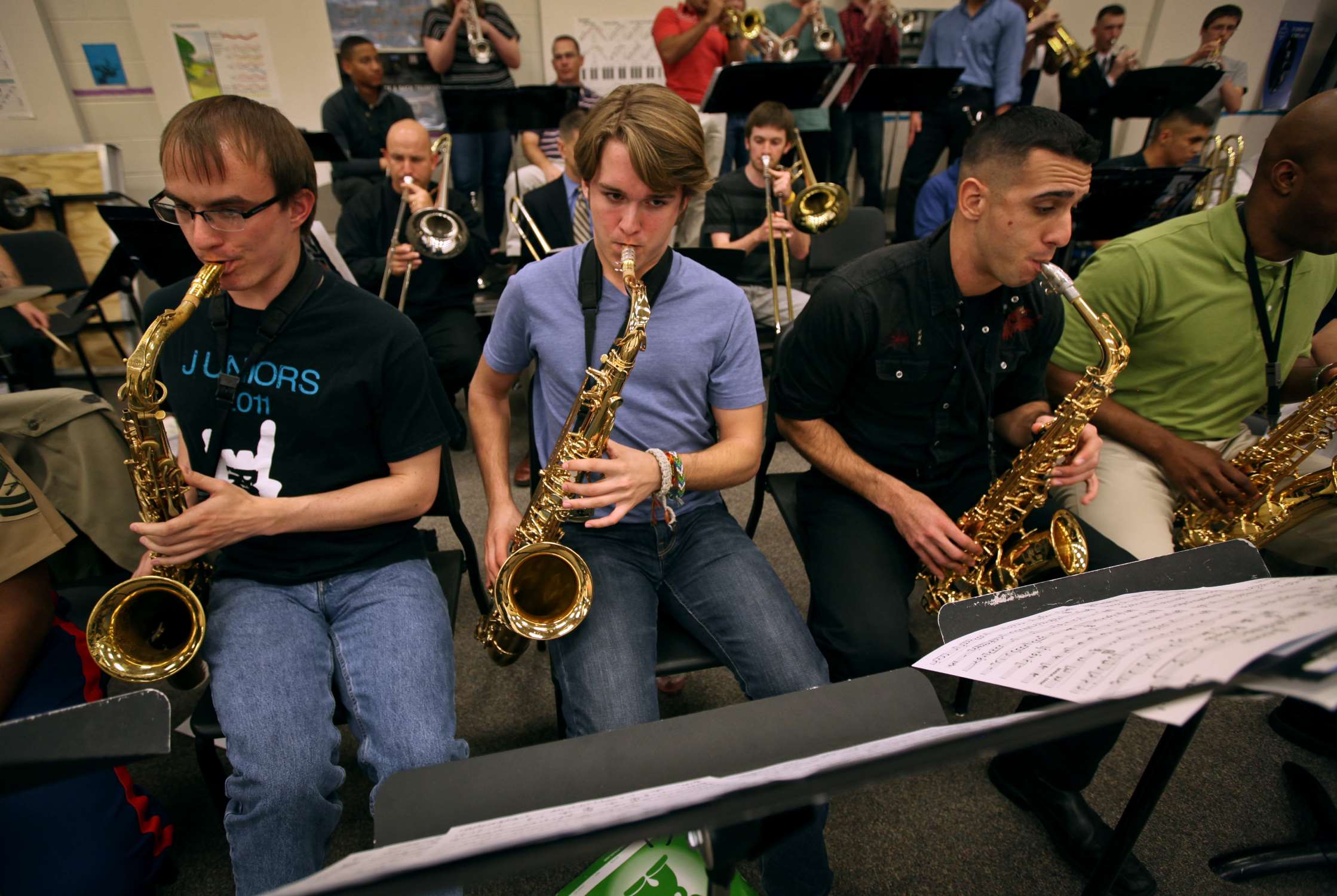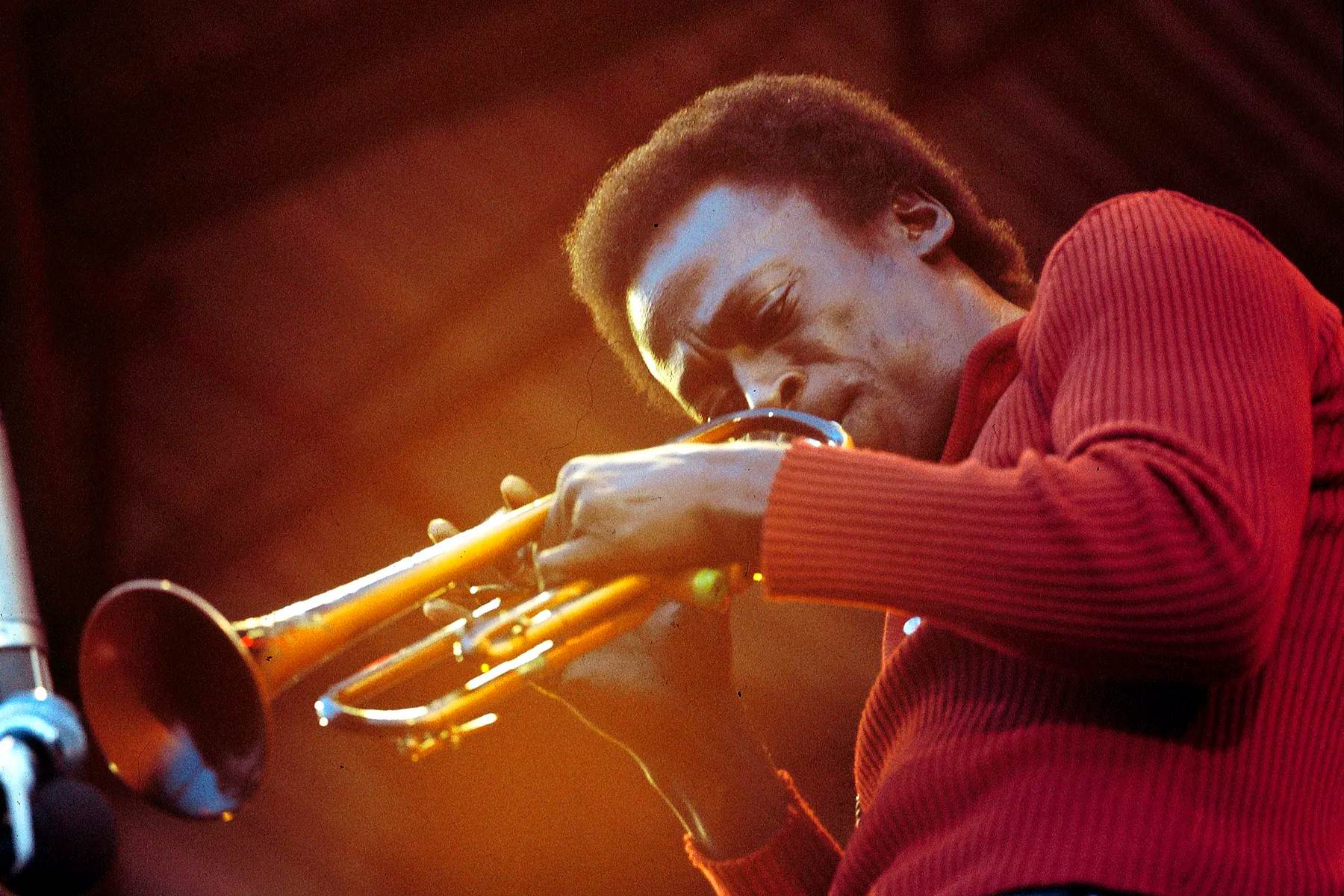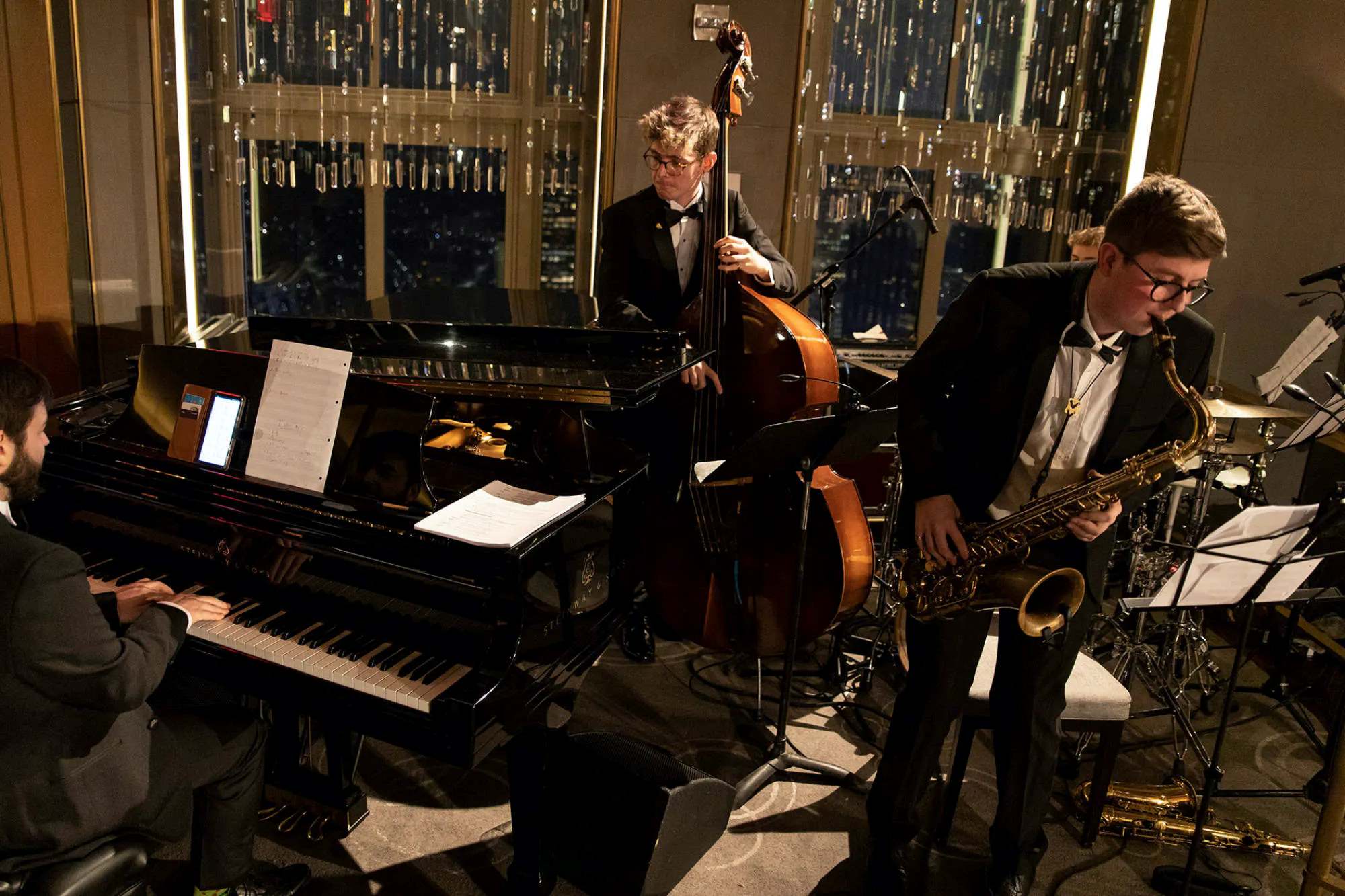

Jazz
How To Jazz Piano
Modified: January 29, 2024
Learn how to play jazz piano with our comprehensive guide. Discover essential techniques and improve your improvisation skills with expert tips and tutorials.
(Many of the links in this article redirect to a specific reviewed product. Your purchase of these products through affiliate links helps to generate commission for AudioLover.com, at no extra cost. Learn more)
Table of Contents
Introduction
When it comes to musical genres, few are as captivating and expressive as jazz. Jazz music has a rich history and a unique style that has captivated audiences for decades. At the heart of any jazz ensemble lies the jazz piano, an instrument that serves as the backbone of the music. Whether you’re a seasoned pianist looking to delve into the world of jazz or a beginner eager to learn the fundamentals, this article is here to guide you on your journey into the captivating realm of jazz piano.
Jazz piano is known for its improvisational nature, complex chord progressions, and syncopated rhythms. It allows pianists to express their individuality and creativity while collaborating with fellow musicians. It’s a genre that demands technical skill, a deep understanding of music theory, and a keen sense of rhythm. From the classic tunes of Miles Davis and John Coltrane to the modern interpretations of Robert Glasper and Hiromi Uehara, jazz piano continues to evolve and push boundaries.
In this article, we’ll explore the essential aspects of jazz piano, from building a strong foundation to mastering complex improvisation techniques. We’ll delve into the world of jazz chords, scales, voicings, and rhythms, providing you with the tools and knowledge necessary to create beautiful jazz music on the piano. Whether you’re a fan of the smooth melodies of Bill Evans or the energetic performances of Art Tatum, this article will help you understand and appreciate the art of jazz piano.
So, grab a seat at the piano and let’s embark on a musical adventure that will unlock your creativity and transport you to the mesmerizing world of jazz piano.
Understanding Jazz Piano
Jazz piano is a unique style of playing that incorporates various elements of harmony, rhythm, improvisation, and creativity. Unlike classical piano, which follows a predetermined set of notes and compositions, jazz piano allows for spontaneity and individual expression.
One of the key aspects of understanding jazz piano is grasping the concept of jazz harmony. Jazz chords and voicings are often more complex and colorful than traditional classical chords. The use of extended chords, such as seventh, ninth, and thirteenth chords, gives jazz music its distinctive sound.
Rhythm is another vital component in jazz piano. Syncopated rhythms, swung notes, and polyrhythms are commonly used to create a grooving and swinging feel. Learning how to play in different time signatures, like 4/4, 3/4, and even 7/8, will help you explore various rhythmic possibilities and enhance your jazz piano skills.
Improvisation is at the heart of jazz music, and it plays a significant role in jazz piano as well. The ability to create spontaneous melodies and solos over chord progressions is an essential skill for any jazz pianist. Understanding scales, modes, and chord-scale relationships will allow you to navigate through harmony and confidently improvise in different musical contexts.
Building a solid foundation in music theory is crucial for understanding jazz piano. Learning the structure and functions of chords, scales, and intervals will help you analyze and interpret the music. It will also allow you to communicate effectively with other musicians and participate in jazz jam sessions or performances.
Listening to great jazz pianists is an excellent way to deepen your understanding of jazz piano. Studying the works of legendary pianists like Oscar Peterson, Herbie Hancock, and Thelonious Monk can provide valuable insights into their unique playing styles and musical concepts.
In the next sections, we will dive deeper into specific techniques and concepts that will further enhance your understanding of jazz piano. From basic jazz chords and scales to advanced improvisation techniques and jazz piano voicings, we will explore the building blocks of jazz piano and guide you towards becoming a confident and skilled jazz pianist.
Building a Strong Foundation
Before diving into the intricacies of jazz piano, it’s important to establish a strong foundation in piano playing and music theory. This foundation will serve as a solid base upon which you can build your jazz piano skills. Here are a few key steps to help you establish the groundwork:
- Learn the basics of piano technique: Familiarize yourself with proper hand position, posture, and finger technique. Practice scales, arpeggios, and exercises to develop finger dexterity and control. Additionally, work on strengthening your sight-reading skills to become comfortable with reading sheet music.
- Develop a good ear: Train your ear to recognize different intervals, chord progressions, and melodic patterns. This will help you when it comes to transcribing jazz piano solos or improvising over chord changes.
- Study music theory: Familiarize yourself with the basics of music theory, including key signatures, scales, intervals, and chords. Understanding these fundamental concepts will provide you with a solid foundation for exploring jazz piano theory and harmony.
- Start with classical piano repertoire: While jazz piano has its unique style, it shares many similarities with classical piano. Learning classical pieces will help you develop technical skills, interpret dynamics, and understand musical phrasing. It will also aid in building your repertoire and expanding your musical knowledge.
- Listen to jazz music: Immerse yourself in the sounds of jazz by listening to various jazz pianists and ensembles. Pay attention to the phrasing, rhythms, and harmonic progressions used in the music. This will help you internalize the style and language of jazz piano.
By focusing on these foundational elements, you will set yourself up for success in learning jazz piano. Take your time to master these skills and concepts before moving on to more advanced jazz piano techniques. Remember, building a strong foundation is essential for becoming a proficient and confident jazz pianist.
Learning Basic Jazz Chords
When it comes to playing jazz piano, chords are the building blocks of harmony. Learning basic jazz chords is a crucial step in understanding and playing jazz music. Here are some essential jazz chords to get you started:
- Major 7th Chords: Major 7th chords are the foundation of jazz harmony. They consist of the root, major third, perfect fifth, and major seventh. For example, the C major 7th chord is spelled C-E-G-B. These chords have a rich and lush sound, and they convey a sense of warmth and stability.
- Minor 7th Chords: Minor 7th chords are commonly used in jazz to add a touch of melancholy or introspection. They consist of the root, minor third, perfect fifth, and minor seventh. For instance, the D minor 7th chord is spelled D-F-A-C. These chords create a mellow and soulful vibe, often heard in ballads and bluesy jazz tunes.
- Dominant 7th Chords: Dominant 7th chords are known for their bluesy and tension-filled sound. They consist of the root, major third, perfect fifth, and minor seventh. For example, the G7 chord is spelled G-B-D-F. Dominant 7th chords have a strong and resolving quality, and they are frequently used in jazz to create tension and lead to resolving chords.
- Diminished 7th Chords: Diminished 7th chords have a distinctive dissonant and mysterious sound. They consist of alternating minor thirds. For instance, the B diminished 7th chord is spelled B-D-F-Ab. These chords are often used to create tension and add color to jazz compositions.
It’s important to practice these basic jazz chords in all 12 keys. By doing so, you will become comfortable moving between different chords and develop muscle memory. Start with one chord at a time and practice transitioning smoothly between chords. Gradually increase the speed and challenge yourself with different progressions and voicings.
Once you’ve mastered these basic jazz chords, you can start expanding your chord vocabulary by exploring more complex voicings, such as rootless voicings and extended chords. Experiment with different inversions and explore different ways of voicing each chord to create unique sounds.
Remember, practice is key when it comes to learning jazz chords. Take your time, be patient, and focus on accuracy and consistency. With dedication and practice, you will develop a solid foundation of jazz chords that will pave the way for your journey into jazz piano.
Mastering Jazz Scales
When it comes to improvising in jazz piano, scales play a vital role in shaping melodies and solos. Understanding and mastering jazz scales is essential for any jazz pianist. Here are a few important jazz scales to explore:
- Major Scale: The major scale serves as the foundation for all other scales and modes. It consists of seven notes and follows a specific pattern of whole and half steps. For instance, the C major scale is spelled C-D-E-F-G-A-B. Understanding the major scale in all keys is crucial for improvisation and understanding chord-scale relationships.
- Blues Scale: The blues scale is derived from the minor pentatonic scale and adds a “bluesy” element to jazz improvisation. It consists of six notes and is commonly used in blues and jazz styles. For example, the C blues scale is spelled C-Eb-F-Gb-G-Bb.
- Modal Scales: Modal scales are derived from the modes of the major scale and are used to create different moods and tonalities. Some important modal scales in jazz piano include the Dorian, Mixolydian, and Lydian scales. These scales offer unique melodic possibilities and help bring out different colors in improvisation.
- Diminished Scale: The diminished scale is commonly used to create tension and color in jazz improvisation. It is a symmetrical scale consisting of alternating whole and half steps. For example, the C diminished scale is spelled C-Db-Eb-E-Gb-G-A-Bb. This scale is often used over dominant chords and diminished chords.
As you learn and practice these jazz scales, it’s important to focus on developing technique and fluency. Start by playing the scales hands separately at a slow tempo, ensuring that each note is clear and accurate. Gradually increase the speed and work on playing the scales smoothly and evenly with both hands.
Once you have become comfortable with playing the jazz scales, the next step is to apply them to improvisation. Experiment with playing the scales over different chord progressions, listening for the unique colors and tensions each scale brings. Start with simple tunes and gradually incorporate more complex harmonic structures as your improvisation skills develop.
Remember, mastering jazz scales takes time and practice. Consistent practice and experimentation will lead to fluency and confidence in using these scales to create captivating and personal jazz piano improvisations.
Improvisation Techniques
Improvisation is a cornerstone of jazz piano playing, allowing musicians to express their unique musical ideas in the moment. While improvisation may seem daunting at first, understanding some key techniques will help you develop your improvisational skills and confidently navigate through jazz progressions. Here are a few essential improvisation techniques to explore:
- Chord Tone Targeting: One effective technique is to focus on targeting chord tones when improvising. Chord tones are the notes that make up the underlying chords in a progression. By emphasizing these notes, you create a strong harmonic connection with the music and establish a melodic foundation.
- Passing Tones: Passing tones are non-chord tones that connect chord tones. They add color and movement to your improvisation. Utilizing passing tones can create a sense of tension and release, enhancing the overall musicality of your improvisation.
- Scale Embellishments: Experiment with embellishments and decorative notes to add interest to your improvisation. This can include techniques such as trills, turns, and grace notes. These flourishes can help bring life to your playing and highlight key melodic phrases.
- Rhythmic Variation: Jazz is known for its syncopated rhythms and swinging feel. Explore rhythmic variations to add groove and energy to your improvisation. Experiment with different rhythms, such as syncopated accents, triplets, and off-beat phrasing, to create a dynamic and engaging improvisational style.
- Motif Development: Motif development involves taking a short melodic idea and expanding on it throughout your improvisation. Develop a motif by varying its rhythm, transposing it to different keys, and exploring different permutations. This technique adds cohesion and structure to your improvisation, creating a musical narrative.
- Call and Response: Emulate the conversational nature of jazz by incorporating call and response elements in your improvisation. This involves playing a melodic phrase and then responding with a contrasting or complementary phrase. This technique adds a dynamic back-and-forth element to your playing and engages your audience.
As with any skill, consistent practice and experimentation are key to developing your improvisation techniques. Start by practicing improvisation over simple chord progressions, gradually increasing the complexity as you become more comfortable. Transcribe solos of jazz piano greats to analyze their improvisational choices and incorporate their language into your playing.
Remember, improvisation is about expressing yourself and telling a musical story. Trust your instincts, listen to the other musicians in your ensemble, and let your creativity flow. With time and practice, you’ll become more confident and proficient in your jazz piano improvisation.
Jazz Piano Voicings
Jazz piano voicings are an essential aspect of creating rich and harmonically interesting chord progressions. Voicings refer to the specific arrangement of notes within a chord, often utilizing different inversions and extensions to add complexity and color to the sound. Here are a few important jazz piano voicings to explore:
- Rootless Voicings: Rootless voicings are commonly used in jazz piano to create a more open sound. They involve omitting the root of the chord and instead using other chord tones and extensions. For example, a rootless voicing for a C7 chord would be spelled E-Bb-D-F, omitting the root note (C).
- Drop 2 Voicings: Drop 2 voicings are a popular voicing technique in jazz piano. They involve taking the second highest note of a chord and dropping it down an octave. This creates a smooth and balanced sound. For instance, a drop 2 voicing for a Gmaj7 chord would be spelled B-D-G-F#.
- Shell Voicings: Shell voicings are minimalist yet effective. They typically consist of the root note, and the third or seventh of the chord. For example, a shell voicing for a Dm7 chord would be spelled D-F-C-E. Shell voicings provide a strong harmonic foundation in a compact form.
- Upper Structure Triads: Upper structure triads incorporate the use of triads from a different key within a chord. For example, using a D major triad over a C7 chord creates a C7(#11) sound. This technique adds color and tension to the chord voicing.
- Spread Voicings: Spread voicings involve spreading out the notes of a chord over a wide range on the piano. By utilizing wide intervals, such as tenths or fifths, spread voicings create a lush and open sound. Experiment with different chord types and inversions to achieve unique and captivating results.
As you explore jazz piano voicings, it’s important to practice them in different keys and contexts. Experiment with voicings over various chord progressions and tunes to understand how they interact within the overall harmonic structure.
Transcribing and studying the voicings used by jazz piano masters is also highly beneficial. Analyzing their voicings and applying similar concepts to your playing will help you develop a rich harmonic palette and expand your voicing options.
Remember, the goal is not to simply memorize voicings, but to internalize the concepts and techniques so that you can apply them creatively in your own playing. Experiment, be open to exploration, and create your unique voice as a jazz pianist using these versatile and expressive voicing techniques.
Incorporating Jazz Rhythms
Jazz music is renowned for its infectious and distinctive rhythms. As a jazz pianist, incorporating jazz rhythms into your playing is crucial for capturing the essence and energy of the genre. Here are some essential jazz rhythms to explore:
- Swing: Swing rhythm is the hallmark of jazz and gives the music its characteristic feel. It involves playing eighth notes unevenly, with the first note slightly longer and the second note slightly shorter. This creates a sense of groove and swing that is synonymous with jazz.
- Syncopation: Syncopation is the deliberate displacement of accent or emphasis from the strong beats to the weak beats. This adds a sense of unpredictability and excitement to your playing. Experiment with syncopating chords, melodies, and rhythmic patterns to create an engaging and syncopated jazz feel.
- Polyrhythms: Polyrhythms involve the simultaneous use of different rhythmic patterns. This technique adds complexity and texture to your playing. Explore playing different rhythms in each hand or layering contrasting rhythmic patterns to create intricate and polyphonic jazz piano arrangements.
- Rhythmic Displacement: Rhythmic displacement involves shifting a rhythmic pattern by starting on a different beat or subdividing the beat differently. This creates an unexpected and engaging effect. Experiment with displacing chords or melodic figures to add rhythmic interest to your playing.
- Rhythmic Variations: Jazz piano allows for endless rhythmic variations and embellishments. Experiment with adding accented notes, staccato attacks, slides, and trills to your playing. These embellishments can add flair and personality to your jazz piano performance.
When incorporating jazz rhythms into your playing, it’s important to listen to and study recordings of jazz pianists. Pay close attention to the rhythmic nuances and subtleties in their playing. Transcribe rhythmic patterns, solos, and comping styles to internalize the jazz rhythms and incorporate them into your own playing.
Practicing with a metronome and playing along with jazz recordings will also help you develop a solid sense of timing and groove. Start slowly and gradually increase the tempo as you become more comfortable. Focus on playing with a relaxed and swinging feel, while maintaining a strong sense of rhythm.
Remember, jazz rhythms are meant to be expressive and dynamic. Allow yourself to experiment and have fun with the rhythms, adding your unique style and interpretation. Embrace the rhythmic complexity and vibrancy of jazz to create captivating and engaging music on the piano.
Developing Jazz Piano Styles
Developing your own jazz piano style is an exciting and personal journey that allows you to bring your unique musical voice to the forefront. While jazz piano encompasses a wide range of styles and interpretations, there are key elements to focus on as you explore and develop your jazz piano style:
- Listening: Immersing yourself in the music of jazz piano legends is essential for developing your style. Listen to a variety of jazz pianists, from the early pioneers to contemporary players. Pay attention to their phrasing, dynamics, use of space, and overall approach to improvisation and interpretation.
- Transcription: Transcribing and studying the solos and compositions of jazz piano masters is a valuable tool for developing your style. Analyze their melodic choices, rhythmic ideas, and use of chord progressions. Transcribing allows you to internalize and incorporate their language into your own musical vocabulary.
- Rhythm and Phrasing: Jazz piano is known for its rhythmic complexity and swing feel. Developing a strong sense of rhythm and exploring different rhythmic patterns and phrasing techniques will add dynamics and excitement to your playing. Experiment with syncopation, accented notes, and rhythmic variations to create your unique rhythmic style.
- Harmonic Language: Develop an in-depth understanding of jazz harmony. Familiarize yourself with various chord voicings, substitutions, and extensions. Gain fluency in playing different scales and modes over chord progressions. Mastery of jazz harmony will allow you to confidently navigate through complex harmonic structures while expressing your musical ideas.
- Improvisation: Improvisation is a cornerstone of jazz piano. Honing your improvisational skills and developing a strong melodic sense is crucial for developing your jazz piano style. Practice improvisation over different chord progressions, experiment with different scales and motifs, and develop your own melodic language.
- Personal Expression: Jazz piano is a vehicle for personal expression and storytelling. Embrace your individuality and let your emotions shine through your playing. Use your experiences and emotions to bring depth and authenticity to your music. Express your musical personality in your choice of phrasing, dynamics, and usage of jazz techniques.
As you embark on developing your jazz piano style, it’s important to remember that it is a continuous and evolving process. Be patient, dedicated, and open to experimentation. Allow your style to grow organically and reflect who you are as a musician.
Collaborating with other musicians, playing in ensembles, and seeking feedback from mentors or peers can also greatly enhance your development as a jazz pianist. Embrace opportunities to perform live and engage with the jazz community to gain exposure and build your musical network.
Ultimately, developing your jazz piano style is about finding your voice, expressing your unique musical ideas, and staying true to the spirit and tradition of jazz. Embrace the journey, listen to your musical instincts, and let your passion for jazz piano guide you on this exciting artistic path.
Tips for Advanced Jazz Piano Players
For those who have already achieved a considerable level of proficiency in jazz piano, there are always new avenues to explore and refine your craft. Here are some tips to help advanced jazz piano players further elevate their playing:
- Expand Your Repertoire: Continuously expand your repertoire by learning new tunes from various jazz eras and styles. Explore compositions from different jazz legends and dive into lesser-known tunes. This will broaden your musical vocabulary and provide you with a diverse range of material to draw from in your improvisations.
- Study Different Jazz Styles: Explore different jazz styles, such as bebop, modal jazz, fusion, or Latin jazz. Each style has its unique characteristics and playing techniques. Delve into the theory, history, and recordings of each style to gain a deeper understanding and appreciation for the genre.
- Develop Your Ear Training: Ear training is essential for any jazz musician, and advanced players should continue to refine their listening skills. Work on recognizing chord progressions, intervals, and melodies by ear. Transcribe solos and tunes from recordings to improve your ability to dissect and interpret music by ear.
- Collaborate and Network: Seek opportunities to collaborate with other musicians, both within and outside of jazz. Playing with different musicians and in different musical contexts will challenge and inspire you. Networking with fellow musicians will not only open doors to new musical opportunities but also provide a supportive community for growth.
- Study Jazz Composition and Arranging: Deepen your understanding of jazz composition and arranging. Learn about different arranging techniques, voicings, and how to write effective melodies and harmonies. This knowledge will enhance your improvisations and allow you to create original compositions or arrangements of jazz standards.
- Attend Workshops and Masterclasses: Take advantage of workshops and masterclasses led by renowned jazz piano experts. These events provide opportunities to learn from experienced musicians, gain insights into their approaches, and receive personalized feedback on your playing.
- Continuously Challenge Yourself: Push the boundaries of your playing by setting challenging goals and continually seeking ways to grow as a jazz pianist. It could be learning complex chord progressions, exploring advanced harmonic concepts, or experimenting with unconventional techniques. Embrace the process of pushing your limits and embrace the journey of lifelong learning.
Lastly, always remember to maintain your love and passion for jazz piano. Cultivate a deep joy and connection to the music, as it will infuse your playing with authenticity and emotional depth. Enjoy the process of honing your skills and sharing your music with others, as this is what jazz piano is truly about.
By incorporating these tips into your practice routine and musical journey, you will continue to evolve as an advanced jazz piano player, making your mark on the genre and creating music that truly reflects your artistic vision.
Conclusion
Jazz piano is a dynamic and expressive art form that captivates both musicians and listeners alike. By delving into the world of jazz piano, you embark on a musical journey filled with creativity, improvisation, and exploration. Throughout this article, we have explored the foundational elements of jazz piano, from understanding jazz harmony and mastering chords and scales to incorporating jazz rhythms and developing your unique style.
Building a strong foundation in piano technique, music theory, and ear training lays the groundwork for your jazz piano journey. Learning basic jazz chords and scales enhances your harmonic and melodic vocabulary, enabling you to explore intricate chord progressions and improvise confidently. Understanding jazz rhythms and incorporating them into your playing adds groove and energy to your performances, while developing your own jazz piano style allows you to express your unique musical voice.
As an advanced jazz piano player, you continue to refine your skills through expanding your repertoire, studying different jazz styles, and collaborating with fellow musicians. Developing your ear training and composition skills adds depth and versatility to your playing, while attending workshops and continuously challenging yourself push the boundaries of your musical abilities.
Ultimately, jazz piano is a lifelong journey of growth and self-expression. Embrace the process, dedicate yourself to practice and exploration, and never stop listening to and learning from the jazz piano greats who came before you. As you navigate the intricate and mesmerizing world of jazz piano, strive to create captivating and deeply moving music that reflects your passion and individuality.
So, take your seat at the piano, let your fingers dance on the keys, and let the magic of jazz piano transport you to a world of endless possibilities. May your jazz piano journey be filled with joy, creativity, and the discovery of your own musical language. Keep swinging, keep improvising, and let the beauty of jazz piano guide you on a lifelong musical adventure.

